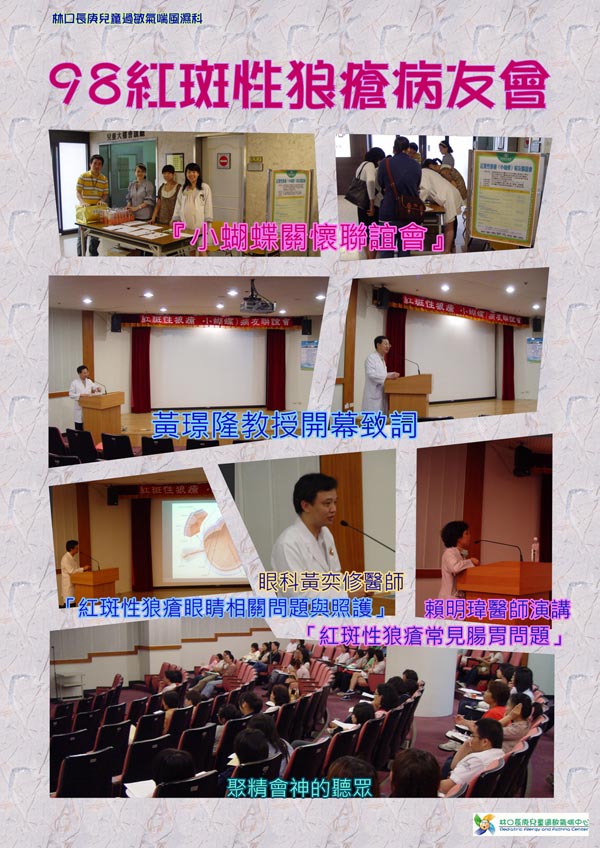Chuang Gung Medical Foundation, Division of Pediatric Allergy, Asthma and Rheumatology - UNREGISTERED VERSION
Main menu
About SLE
About Systemic lupus erythematosus
by Min-
Systemic lupus erythematosus (also commonly known as SLE) is one of many pediatric autoimmune diseases. The disease is mainly caused by a variety of different auto-
The first line of treatment for SLE is corticosteroid, NSAID and anti-
The prognosis for pediatric SLE improved much over the years with 5 year survival rate higher than 95% with progressively lower rate in long term morbidity. The key to good treatment outcome is good teamwork between the child, parents and doctors.

